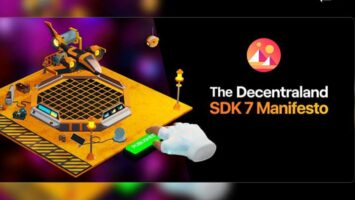SNEAK PEEK
- Crypto Unicorns founder Aron Beireschmitt talks in the NFT Steez about the main components of blockchain-based games.
- Beireschmitt says there are still chances of experimentation and advancement for these games.
- Claims bright days are ahead once these games are done with the transition from the “growth phase” to the “maturation phase.”
Early in 2022, as the buzz and excitement surrounding play-to-earn (P2E) games and platforms began to wane, Web3 contestants highlighted the need for games to be more “fun” and centric to finance-based.
In context with the same in the latest episode of NFT Steez, Alyssa Expósito and Ray Salmond interviewed the CEO of Laguna Games and founder of Crypto Unicorns, Aron Beireschmitt, about the viable of P2E-focused blockchain games.
As per Beireschmitt, the transformation from a play-to-earn to a play-and-earn model still advises that there is much more experimentation and advancement for these games.
He also added that nothing much has changed about how games are made now, but yes, with blockchain technology, crypto enthusiast and gamers are now able to play, own, and even earn from these play-and-earnings models. The main question to be focused on is, is it sustainable?
The emotional shift of P2E gaming
With regards to the change in the sentiment of P2E and how crypto unicorn is proceeding, Beireschmitt said:
According to Beireschmitt, these gaming loops not only should resemble form and function, but they also need to be more fun so that players can engage.
Though, he also admitted that blockchain games are not everyone, nor everyone enjoys playing these games, and when we look at the target audience of Crypto Unicorns, it is more likely to be crypto- natives.
In-game economies are found to be more sticking points for most of the play-and-earn games. During the interview, while discussing the factors that are important for in-game economies to be sustainable and stable in the long run, Beireschmitt mentioned that one of the crucial factors that aid is the dynamic between passive and active players.
Those players who invest in active players to advance themselves in the game are passive players.
Concluding comment, he emphasized that for dynamics to become sustainable, “skill-based gaming loops” and “token sinks” must be added as this returns the player back to the economy and the ecosystem.
As most play-and-earn games are still struggling with their transition from the “growth phase” to the “maturation phase,” he strongly claims that bright days in the future are ahead.









